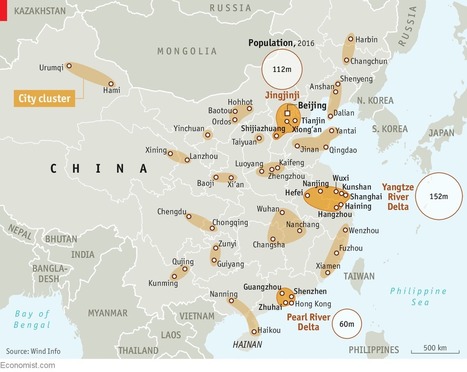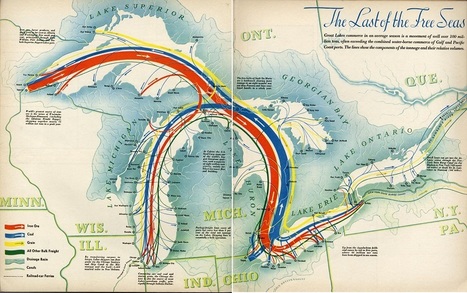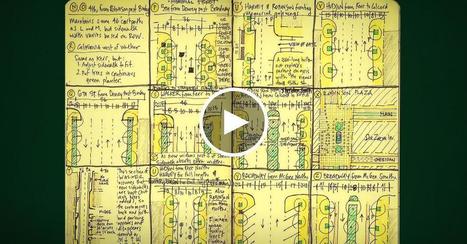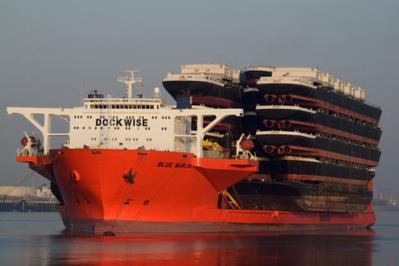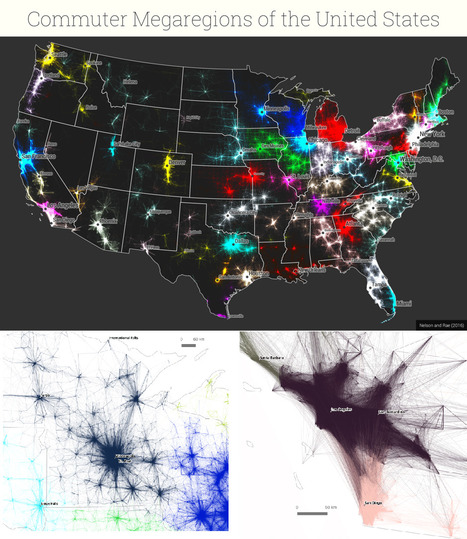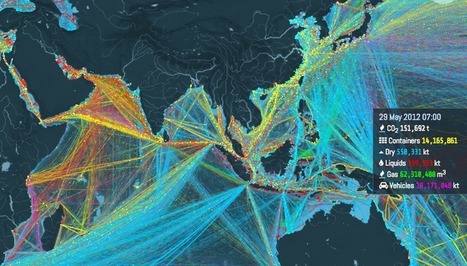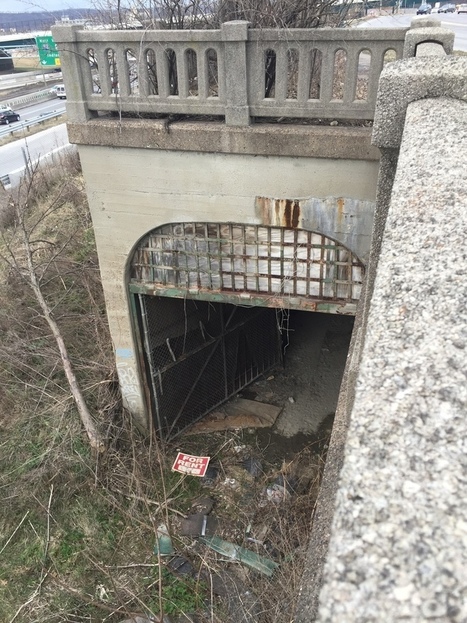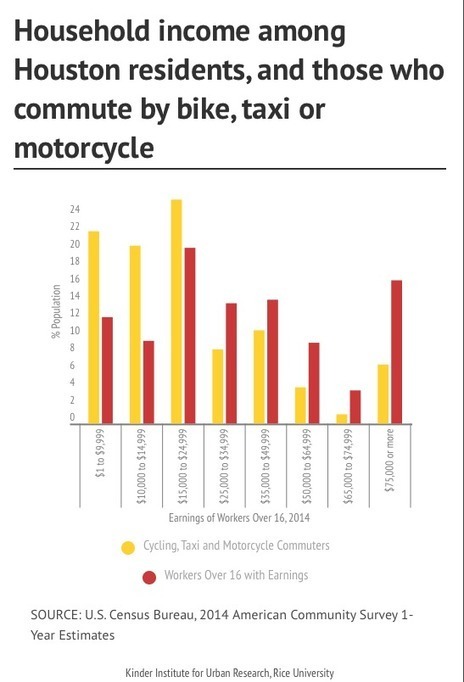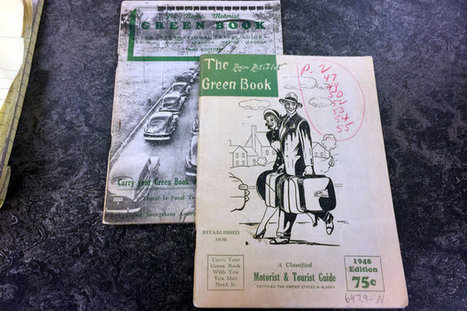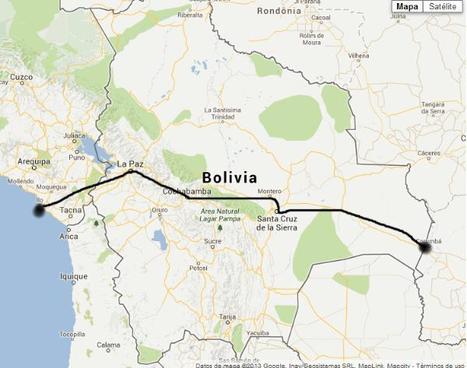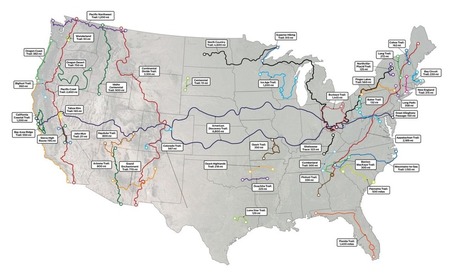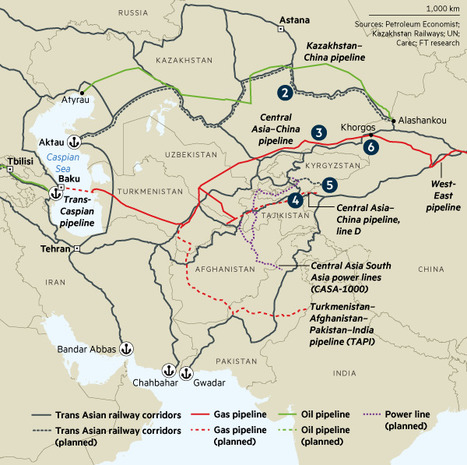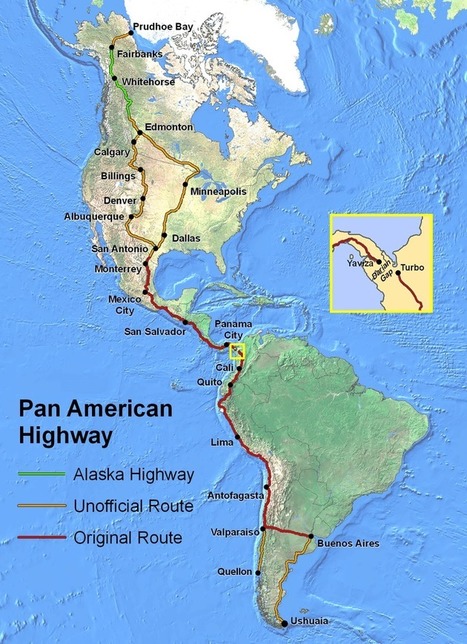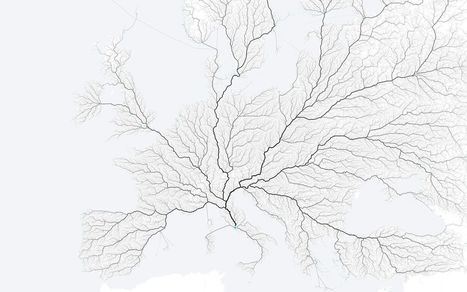 Your new post is loading...
 Your new post is loading...
"China's urbanization is a marvel. The population of its cities has quintupled over the past 40 years, reaching 813m. By 2030 roughly one in five of the world’s city-dwellers will be Chinese. But this mushrooming is not without its flaws. Restraining pell-mell urbanization may sound like a good thing, but it worries the government’s economists, since bigger cities are associated with higher productivity and faster economic growth. Hence a new plan to remake the country’s map.
"The Seattle-based internet book seller Amazon just announced plans to open an enormous fulfillment center in the North Randall, Ohio. This is a big deal for the small community which has suffered greatly since the Randall Park Mall, once the largest in America, shut down due to retail sales moving online. Amazon is actually building its new warehouse on the same land where the mall once stood. The irony of this is lost on no one."
"The Last of the Free Seas is the title of this fantastic map of the Great Lakes made by Boris Artzbasheff. It was published in Fortune Magazine in July 1940."
Via Ben Salve
Freedom from cars, freedom from sprawl, freedom to walk your city! City planner Jeff Speck shares his "general theory of walkability" -- four planning principles to transform sprawling cities of six-lane highways and 600-foot blocks into safe, walkable oases full of bike lanes and tree-lined streets.
Via CT Blake
"The ships, railroads, and trucks that transport containers worldwide form the backbone of the global economy. The pace of globalization over the last sixty years has accelerated due to containers; just like canals and railroads defined earlier phases in the development of a global economy. While distance used to be the largest obstacle to regional integration, these successive waves of transportation improvements have functionally made the world a smaller place. Geographers refer to this as the Space-Time Convergence."
Via Michael Miller
New maps use math to define the amorphous term.
Investment in bicycle infrastructure is a modern and intelligent move. Many cities get this. Many don't. Tags: urban, place, transportation, planning, urbanism, architecture.
"Traffic accidents kill 1.25 million people per year, and it’s well-known that those deaths are disproportionately in low- and middle-income countries. Over at CityMetric, writer James O’Malley has added an interesting wrinkle, by showing a correlation between the number of traffic fatalities in a country and the corruptness of its government."
Via Ben Salve
"Ships carry 11 billion tons of goods each year. This interactive map shows where they all go. About 11 billion tons of stuff gets carried around the world every year by large ships. Clothes, flat-screen TVs, grain, cars, oil — transporting these goods from port to port is what makes the global economy go 'round. And now there's a great way to visualize this entire process, through this stunning interactive map from the UCL Energy Institute."
Interstate 75 slices the city of Cincinnati in half like an orange. On one side is the city’s Catholic working class west, while the east side is favored by...
"A postal worker created a guide for black travelers that was published almost every year from 1936 to 1966."
"Urban planners are noticing a cultural gap between bike advocates and others who bike. Planners see a particular type of cyclist: a working-class person – usually a minority and often a recent immigrant – riding to work on whatever type of bike he can get his hands on. Those cyclists are men and women for whom biking isn’t an environmental cause or a response to an urban trend but a means of transportation that’s cheaper than a car and faster than walking."
"From 1936 to 1966, the 'Green Book' was a travel guide that provided black motorists with peace of mind while they drove through a country where racial segregation was the norm and sundown towns — where African-Americans had to leave after dark — were not uncommon."
Via Mike Busarello's Digital Storybooks
|
"It might be a strip of sand without even a jetty but a small stretch of the Pacific coast now harbors Bolivia's dream of regaining a coast and becoming a maritime nation. The landlocked Andean country has won access to a desolate patch of Peru's shoreline, fueling hopes that Bolivia will once again have a sea to call its own. President Evo Morales signed a deal yesterday with his Peruvian counterpart, Alan García, allowing Bolivia to build and operate a small port about 10 miles from Peru's southern port of Ilo. The accord, sealed with declarations of South American brotherhood, was a diplomatic poke at Chile, the neighbor that seized Bolivia's coast and a swath of Peruvian territory in the 1879-84 war of the Pacific."
"Unchecked development remains a priority in the famously un-zoned city, creating short-term economic gains for some, but long term flood risk for everyone."
"There are around 6,000 cargo vessels out on the ocean right now, carrying 20,000,000 shipping containers, which are delivering most of the products you see around you. And among all the containers are a special subset of temperature-controlled units known in the global cargo industry, in all seriousness, as reefers. 70% of what we eat passes through the global cold chain, a series of artificially-cooled spaces, which is where the reefer comes into play."
Via Michael Miller
"It is estimated that 97 per cent of all trade – the things we buy in shops – will have been transported in containers by ships at sea. The container vessel, stacked high with uniformly-sized metal boxes, has become a symbol of our globalized world. This is a world of imports and exports, a world where moving things across huge distances keeps the price of daily commodities low as items are manufactured in one place, then packaged in another, before arriving on the shores where they will eventually be sold. In recent geographical literature, attention has turned to the world at sea – a space traditionally overlooked. Geography means ‘Earth-writing’ and geographers have taken the origins of the term very seriously. They have written primarily about the Earth: the ground, the soil, the land. The sea is something ‘out there’ – seemingly disconnected from our everyday lives. However, an appreciation of the world as made from flows and connections has enabled geography to recognize that the sea is essential to our landed life." http://wp.me/p2Ij6x-5DS Tags: transportation, globalization, diffusion, industry, economic.
A $46bn economic corridor through disputed territories in Kashmir is causing most concern
"The Catalan capital’s radical new strategy will restrict traffic to a number of big roads, drastically reducing pollution and turning secondary streets into ‘citizen spaces’ for culture, leisure and the community. Black routes allow public transport and cars at 50km/h, while green routes only allow private vehicles at 10km/h to prioritize pedestrians and cycling." Tags: Catalonia, Spain, mobility, transportation, place, neighborhood, urban, planning, urbanism.
Via Scarpaci Human Geography
"Traffic accidents kill 1.25 million people per year, and it’s well-known that those deaths are disproportionately in low- and middle-income countries. Over at CityMetric, writer James O’Malley has added an interesting wrinkle, by showing a correlation between the number of traffic fatalities in a country and the corruptness of its government."
At its fullest extent the Pan-American Highway is a network of roads stretching from Prudhoe Bay, Alaska, to Ushuaia, Argentina, a distance of around 30,000 kilometres (19,000 miles).
Via malbert, Mike Busarello's Digital Storybooks
"As the saying goes, 'All roads lead to Rome.' Folks at the moovel lab were curious about how true this statement is, so they tested it out. They laid a grid on top of Europe, and then algorithmically found a route from each cell in the grid to Rome, resulting in about half a million routes total. Yep, there seems to be a way from Rome from every point." Tags: fluvial, mobility, transportation, mapping.
Via Mike Busarello's Digital Storybooks
"In our dense cities where land is valuable and housing is expensive, why do our cars pay cheaper rent than people?"
"How did Southern Californians come to treat their highway route numbers as if they were proper names?"
|



 Your new post is loading...
Your new post is loading...

